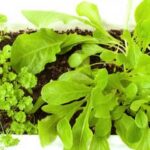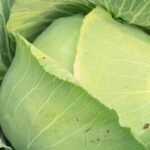For successful vegetable gardening, having the right type of soil is crucial. Plants rely on the soil to provide them with essential nutrients, water, and a stable foundation for growth. Understanding the different types of soil and their characteristics can contribute to creating an ideal environment for growing vegetables.
One specific type of soil that has gained popularity among gardeners is potting soil. Potting soil is specially formulated to meet the unique needs of container gardening, making it a convenient option for those with limited space or who prefer to grow their vegetables in pots or raised beds.
In this article, we will delve into the world of soil for vegetable gardens, with a particular focus on potting soil. We will explore its composition, advantages, drawbacks, and factors to consider when selecting potting soil for your vegetable garden. Additionally, we will provide instructions on how to use potting soil effectively and share valuable tips for maximizing its benefits while avoiding common mistakes.
By understanding the role that proper soil plays in vegetable gardening and exploring the use of potting soil as an alternative option, you can gain confidence in your ability to create a thriving and bountiful vegetable garden no matter what size or space limitations you may have. So let’s dive in and uncover whether potting soil is indeed good for vegetable gardens.
Understanding the Different Types of Soil
When it comes to vegetable gardening, soil plays a crucial role in the success and productivity of your plants. Understanding the different types of soil and their characteristics is essential for creating an optimal growing environment. By using the right soil composition, you can provide your vegetable garden with the ideal conditions for healthy growth and abundant harvests.
There are three basic types of soil: clay, sandy, and loam. Clay soil is known for its dense texture that holds water for a long time. While this may seem advantageous at first, it can easily become compacted and hinder root development.
On the other hand, sandy soil has larger particles that drain quickly but can result in poor moisture retention. Lastly, loam soil is considered the ideal type as it combines elements from clay and sandy soils, providing good drainage while retaining adequate moisture levels.
The type of soil you choose for your vegetable garden will depend on several factors such as climate, location, and plant preferences. For instance, if you live in a hot and arid region where water retention is a challenge, sandy or loam soil would be more suitable. However, if you experience heavy rainfall or have a tendency to overwater your plants, clay or loam soils would be better options due to their ability to retain moisture.
To determine the type of soil you have in your garden, you can perform a simple test called the “squeeze test.” Take a handful of damp (but not wet) soil from your garden and squeeze it tightly in your hand. If it forms a firm ball that does not crumble when touched or poked with a finger, it is likely clay soil.
If it feels gritty and falls apart easily when squeezed lightly or poked with fingers, it is most likely sandy soil. And if it holds shape initially but crumbles when touched or poked, you probably have loam soil.
Using the right type of soil and having a proper understanding of its characteristics is crucial for vegetable gardening success. It ensures that your plants receive the necessary nutrients, moisture, and aeration while preventing issues like poor drainage or compacted roots. Taking the time to assess and improve your garden’s soil composition will be well worth the effort when you see the healthy growth and thriving crops in your vegetable garden.
What is Potting Soil
Potting soil, also known as potting mix or container mix, is a specially formulated soil mixture designed for use in container gardening. Unlike garden soil, potting soil is composed of a blend of various organic and inorganic materials that create an optimal growing environment for plants in containers.
Some key components commonly found in potting soil include peat moss, perlite or vermiculite, compost or other organic matter, and a mixture of nutrients. Peat moss serves as the base material in most potting soils, providing good water retention while still allowing for proper drainage. Perlite or vermiculite are added to improve aeration and prevent compaction of the soil mixture. Compost or other organic matter adds nutrients to support plant growth.
One of the main benefits of using potting soil in vegetable gardens is its ability to provide excellent drainage. Containers often have limited space for roots to spread out and excess water can lead to root rot and other problems. The components of potting soil ensure that excess water is able to drain away while still retaining enough moisture for healthy plant growth.
Additionally, potting soil is typically free from weeds, diseases, and pests commonly found in garden soils. This reduces the risk of infestations and allows for cleaner cultivation practices. Potting soil can also be tailored specifically to the needs of different types of vegetables, whether they require acidic or alkaline conditions.
Overall, the specific properties and benefits of potting soil make it an ideal choice for container gardening in vegetable gardens. Its ability to retain moisture while also ensuring proper drainage promotes healthy root development and minimizes the risk of overwatering. Furthermore, its weed-free composition provides a cleaner growing environment that can lead to better yields and healthier plants for vegetable gardeners.
| Component | Benefit |
|---|---|
| Peat moss | Provides water retention and proper drainage |
| Perlite or vermiculite | Improves aeration and prevents soil compaction |
| Compost or organic matter | Adds nutrients to support plant growth |
Pros and Cons of Using Potting Soil in Vegetable Gardens
Using potting soil in vegetable gardens has both advantages and disadvantages that gardeners should consider. One of the main benefits of using potting soil is its enhanced drainage and aeration properties. Potting soil is typically formulated with a blend of organic materials, such as peat moss or coconut coir, which help to create air pockets in the soil. This allows roots to access oxygen more easily, promoting healthy root development and preventing issues like root rot.
Additionally, potting soil tends to have better drainage capabilities than traditional garden soil. It is often composed of lightweight materials that do not compact easily, allowing excess water to drain away quickly. This can be especially beneficial for vegetables that are prone to rot or fungal diseases when exposed to consistently wet conditions.
However, there are also some drawbacks associated with using potting soil in vegetable gardens. One major consideration is the need for regular fertilization. Potting soil does not typically contain a high level of nutrients, so additional fertilizer will likely be necessary for optimal plant growth. Gardeners may need to use organic fertilizers or apply slow-release granules periodically throughout the growing season.
Another potential disadvantage is the cost of using potting soil, as it can be more expensive than regular garden soil. This is especially true if you have a large vegetable garden that requires a significant amount of potting soil to fill containers or raised beds. However, many gardeners find that the benefits outweigh the extra cost, particularly if they are dealing with poor-quality native soil or limited gardening space.
In summary, using potting soil in vegetable gardens can offer improved drainage and aeration properties compared to traditional garden soil. While regular fertilization may be needed and there may be additional costs involved, many gardeners find that these drawbacks are outweighed by the increased success and productivity of their vegetable plants.
Factors to Consider When Choosing Potting Soil for Vegetable Gardens
When it comes to choosing the right potting soil for your vegetable garden, there are several important factors to consider. These factors will determine the overall health and productivity of your plants. Here are some key points to keep in mind when selecting potting soil for your vegetable gardens:
- Nutrient Content: Vegetables require an ample supply of nutrients to grow and produce a bountiful harvest. As such, it is important to choose potting soil that is rich in essential nutrients like nitrogen, phosphorus, and potassium. Look for potting soils that are labeled as “complete” or “enriched” with these nutrients.
- pH Levels: The pH level of the soil directly affects the availability of nutrients to plants. Most vegetables prefer a slightly acidic soil with a pH range between 6 and It is crucial to choose potting soil with a pH level within this range to ensure optimal nutrient uptake by your vegetable plants.
- Organic Components: Potting soils that contain organic matter provide numerous benefits for vegetable gardens. Organic matter improves soil structure, enhances water retention, promotes beneficial microbial activity, and gradually releases nutrients to the plants. Look for potting soils that contain compost or well-rotted manure as organic components.
In addition to these three factors, it is also essential to consider other aspects such as water retention ability, drainage capacity, and the presence of any potential contaminants or pests in the potting soil.
By carefully considering these factors when selecting potting soil for your vegetable garden, you can create an environment that fosters healthy plant growth and high yields. Choosing the right potting soil will lay a solid foundation for your gardening success and contribute significantly to the overall health of your vegetable garden.
To ensure you choose the best potting soil for your specific needs, consider conducting a simple pH test or consulting with local agricultural experts who can provide guidance on selecting suitable options based on plant requirements and local climate conditions. Remember, the quality of your potting soil will directly impact your gardening success, so it’s worth taking the time to make an informed decision.
How to Use Potting Soil in Vegetable Gardens
Using potting soil in a vegetable garden can be an effective way to provide the necessary nutrients and optimal growing conditions for your plants. Here are some step-by-step instructions on how to prepare the soil for vegetable gardening using potting soil, as well as some tips for container gardening.
- Choose the right containers: When using potting soil in a vegetable garden, it’s important to select containers that have adequate drainage holes to prevent waterlogging. Opt for containers made of non-toxic materials, such as ceramic or food-grade plastic, and ensure they are large enough to accommodate the root system of your vegetables.
- Prepare the containers: Before filling the containers with potting soil, it’s essential to clean them thoroughly with soap and water to remove any dirt or debris. Rinse them well and allow them to air dry before use.
- Fill the containers: Fill each container with potting soil until it is about 2/3 full. Leave some space at the top for watering and plant growth.
- Add organic matter: To enhance the nutrient content of the potting soil, you can mix in some organic matter such as compost or aged manure. This will help provide a steady release of nutrients to your plants throughout the growing season.
- Mix in fertilizer: While potting soil contains some nutrients, it’s important to supplement it with fertilizer specific to vegetable gardens. Follow the recommended dosage on the fertilizer package and mix it evenly into the potting soil.
- Water thoroughly: After filling the containers with potting soil, water them thoroughly until you see water draining out from the bottom drainage holes. This ensures that the potting soil is evenly saturated and ready for planting.
- Plant your vegetables: Once the potting soil is prepared, you can start planting your vegetables according to their specific spacing and depth requirements. Gently loosen their roots before placing them into the prepared holes in the potting soil.
- Maintain proper watering: Container gardening using potting soil requires more frequent watering due to the limited soil volume. Keep an eye on the moisture level of the potting soil and water whenever it feels dry to the touch. Avoid overwatering, as it can lead to root rot.
- Provide adequate sunlight: Most vegetable plants require at least six hours of direct sunlight daily. Place your containers in a spot that receives ample sunlight throughout the day to ensure proper growth and development.
- Mulch the containers: To conserve moisture and suppress weed growth, consider applying a layer of mulch on top of the potting soil. This will help retain moisture in the containers and reduce the need for frequent watering.
By following these step-by-step instructions, you can effectively use potting soil in your vegetable garden and provide optimal growing conditions for your plants. Container gardening using potting soil allows for greater control over soil composition, drainage, and aeration, making it an ideal choice for those with limited garden space or poor-quality native soil.
Tips for Maximizing the Benefits of Potting Soil in Vegetable Gardens
Watering Techniques
One of the most crucial aspects of maintaining a healthy vegetable garden is proper watering. When using potting soil in vegetable gardens, it’s important to pay attention to the moisture levels and ensure that plants are receiving adequate hydration. To maximize the benefits of potting soil in vegetable gardens, consider implementing the following watering techniques:
- a. Deep Watering: Instead of lightly sprinkling water over the plants, make sure to water deeply so that the moisture reaches the roots. This encourages deeper root growth and helps plants withstand drought conditions.
- b. Watering at The Base: Rather than watering from above with a sprinkler or hose, focus on watering directly at the base of each plant. This prevents excessive moisture on foliage, reducing the risk of diseases.
- c. Consistent Moisture Levels: Avoid allowing the potting soil to dry out completely between waterings as this can stress the plants. On the other hand, avoid overwatering which can lead to root rot or nutrient leaching.
Mulching
Mulching plays a critical role in optimizing the utilization of potting soil in vegetable gardens. It offers numerous benefits such as moisture retention, weed suppression, temperature regulation, and improved soil structure. To maximize these benefits and support healthy plant growth in your vegetable garden:
- a. Choose Organic Mulch: Opt for organic mulch materials such as straw, wood chips, or dried leaves instead of synthetic options which can heat up and potentially harm plant roots.
- b. Apply Mulch Properly: Spread mulch around vegetable plants making sure not to pile it against stems or trunks as this can create a breeding ground for pests and diseases.
- c. Replenish as Needed: Over time, organic mulches break down and decompose, therefore replenishing them regularly is important to maintain their effectiveness in conserving moisture and suppressing weeds.
Pest Control
Pest control is another important aspect of maximizing the benefits of potting soil in vegetable gardens. While potting soil itself may not completely repel pests, there are measures you can take to minimize their presence and protect your plants:
- a. Companion Planting: Intercrop vegetables with companion plants that naturally repel pests, such as Marigolds which deter aphids and nematodes.
- b. Regular monitoring: Check your plants regularly for signs of pest infestations. Early identification allows for prompt action to prevent damage.
- c. Organic Pesticides: If necessary, opt for organic pesticides that are safe for both humans and the environment. Follow the instructions carefully to ensure effectiveness without harming beneficial insects.
By implementing these tips and strategies in your vegetable garden, you can maximize the benefits provided by potting soil, resulting in healthier and more productive plants. Experiment with different techniques and adapt them to suit your specific gardening needs to achieve optimal results.
Common Mistakes to Avoid When Using Potting Soil in Vegetable Gardens
When using potting soil in vegetable gardens, there are several common mistakes that gardeners should be aware of and avoid. By being mindful of these pitfalls, you can ensure optimal growth and success in your vegetable garden. Here are some expert tips on avoiding common mistakes when using potting soil.
One common mistake that gardeners make when using potting soil is overwatering their plants. While it is essential to keep the soil moist, excessive watering can lead to root rot and other water-related diseases. To avoid this, always check the moisture level of the soil before watering and only water when necessary. It’s also important to provide proper drainage for your plants by ensuring that containers have holes at the bottom for excess water to escape.
Improper nutrition management is another mistake to avoid. Potting soil alone may not provide all the necessary nutrients for your vegetables to thrive. Regular fertilization is crucial to supply essential elements such as nitrogen, phosphorus, and potassium. Consider using organic fertilizers or compost to enrich the nutrient content of your potting soil. Additionally, periodic soil testing can help you identify any nutrient deficiencies and make targeted adjustments.
Inadequate drainage can hinder plant growth and cause root damage. When using potting soil in containers or raised beds, it’s vital to ensure proper drainage by selecting containers with adequate drainage holes and using gravel or stones at the bottom of each container. This allows excess water to drain freely, preventing waterlogged roots.
By avoiding common mistakes such as overwatering, improper nutrition management, and inadequate drainage when using potting soil in vegetable gardens, you can set yourself up for a successful harvest season. Remember to regularly assess your plants’ needs, monitor moisture levels in the soil, fertilize appropriately, and provide proper drainage for healthy root development. With these key considerations in mind, you will be well on your way to creating a thriving vegetable garden using potting soil.
Conclusion
In conclusion, potting soil can be a valuable asset for vegetable gardens. Throughout this article, we have explored the different types of soil and their characteristics, as well as the components and benefits of potting soil. We have examined the pros and cons of using potting soil, highlighted factors to consider when choosing the right type of potting soil, and provided step-by-step instructions on how to use it effectively in vegetable gardens.
Using potting soil in your vegetable garden offers several advantages. Its enhanced drainage and increased aeration promote healthier root development and prevent waterlogged conditions that can lead to disease. The lightweight nature of potting soil makes it ideal for container gardening, allowing flexibility in garden layout and placement. Additionally, its specific composition provides a fertile environment that encourages strong plant growth.
However, it is important to note that using potting soil requires regular fertilization due to its relatively low nutrient content compared to traditional garden soils. Therefore, careful consideration should be given to nutrient supplementation in order to ensure optimal plant health and productivity.
As you embark on your vegetable gardening journey, don’t be afraid to experiment with different practices and find what works best for you. While there are general guidelines and best practices, every garden is unique, and finding the perfect balance of techniques and products takes time and patience.

If you’re looking to get into vegetable gardening, or are just looking for some tips on how to make your current garden better, then you’ve come to the right place! My name is Ethel and I have been gardening for years. In this blog, I’m going to share with you some of my best tips on how to create a successful vegetable garden.





